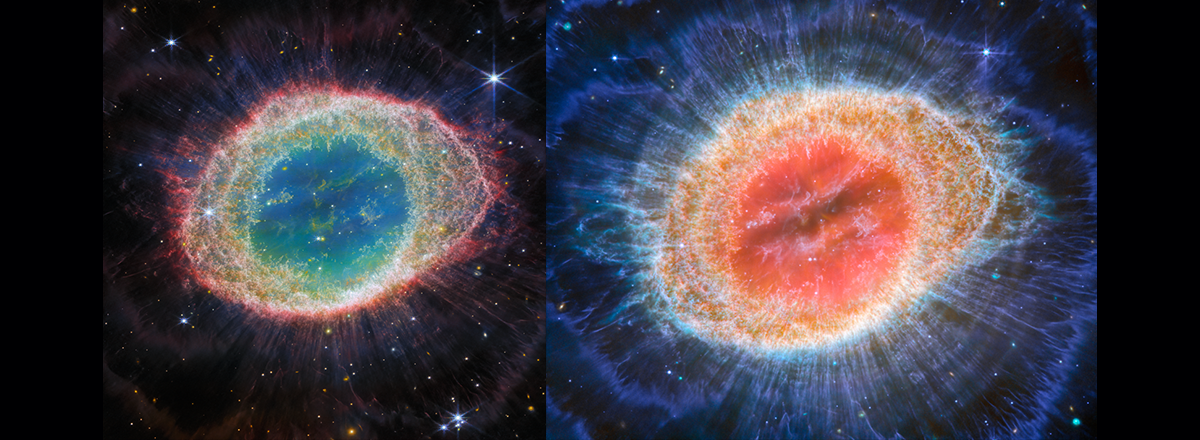NASA's James Webb Telescope Captures New Stunning Images of the Ring Nebula
Roger Wesson from Cardiff University commented on the unprecedented level of detail in the images, revealing that the bright ring within the nebula is comprised of approximately 20,000 individual clumps of dense molecular hydrogen gas.

The James Webb Space Telescope has unveiled new breathtaking images of the Ring Nebula, shedding light on the intricate structures of a dying star's final stages. This nebula, also known as Messier 57, is recognized as one of the finest examples of a planetary nebula, showcasing the complexities of stellar evolution.
Roger Wesson from Cardiff University commented on the unprecedented level of detail in the images, revealing that the bright ring within the nebula is comprised of approximately 20,000 individual clumps of dense molecular hydrogen gas.
The Ring Nebula, positioned in the constellation Lyra and located 2,200 light-years away from Earth, has long intrigued astronomers due to its visibility on the night sky. This planetary nebula presents a unique opportunity for researchers to study the complex processes of a star's evolution.
The James Webb Space Telescope's advanced capabilities allowed scientists to capture detailed images of the nebula, revealing its intricate structure and shedding new light on the final stages of stellar life.

